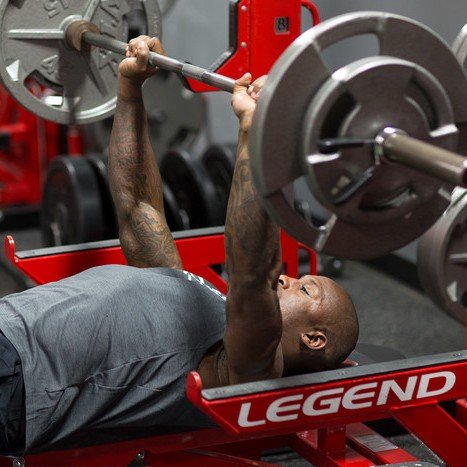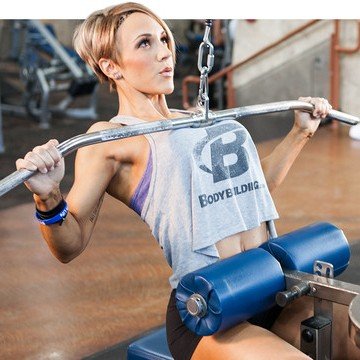Death, taxes, and...training plateaus? They're all inevitable—especially the latter on chest day, when your bench press won't budge no matter how hard you try. Yeah, you can cheat your way to "success" by bouncing the barbell off your chest. But, c'mon, really?
To get past a sticking point the honest way, make the movement harder. Yes, you read that right! These two chest-day techniques are sonofabitch tough. Nail them, and you're back on the road to big-time pec gains.
Trick 1: Turn That Bench Press Into A Dead Bench
For most lifters, the bench press is most difficult through the bottom portion of the range of motion (ROM), just off the chest. You get past this sticking point by focusing on it with a technique called the "paused bench press."
In a normal press, you reverse direction at the bottom of the ROM in one smooth motion, releasing the elastic bar back up. In paused bench presses, however, you allow the bar to settle (about 2 seconds) on the safeties in a power rack or by stopping each rep at the bottom. Either way, the technique dissipates that built-up energy and forces you to use your musculature alone to push the bar out of the hole. This technique is sometimes called a "dead" bench because you're starting each lift from a dead stop.
Over time, the paused bench press can help you remove that sticking point and push you past your plateau.
Trick 2: Train Along The Ascending Strength Curve
Bands and chains allow you to incorporate what's called "variable resistance" into a movement. When the bar is pushed away from your body, you face greater resistance. Resistance "varies" because you face less resistance when the bar is closer to your body, where you're weakest, and more resistance when the bar is farther from your body, where you're strongest.
The concept of variable resistance also applies to quad/glute, shoulder, and triceps exercises. The concept is reversed when you do back, hamstrings, and biceps movements, because the resistance is greater when the bar is closer to your body.
Variable resistance is especially useful for movements like squats and bench presses that follow an ascending strength curve; that is, the more you move toward the upper end of the ROM, the more strength you can bring to bear.
Because big, heavy chains can be a pain in the neck to lug around, many lifters prefer to invest in resistance bands for chest training.
Source: http://www.bodybuilding.com/





